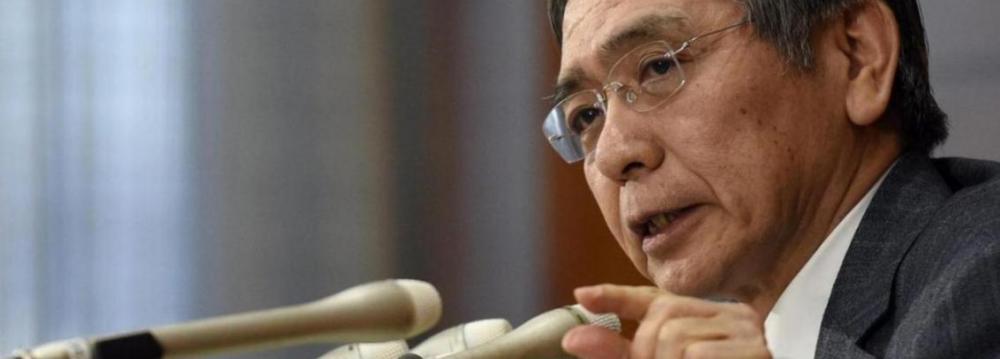The Bank of Japan faces intense pressure to ease monetary policy this week as a surging yen threatens its drive for 2% inflation.
Only three months after the BoJ’s shock move to negative interest rates, however, analysts are split on what to expect: 18 out of 41 surveyed by Bloomberg expect no action, while the rest disagree on the form it may take, Worldnews.USA reported.
The divide highlights deep uncertainty about how Japan’s central bank reacts to economic data, leading to a febrile market atmosphere that could trigger big moves in the yen whatever the BoJ decides.
Most BoJ officials would like to wait and take some time to evaluate the effect of negative rates, but policy is largely dictated by one man—governor Haruhiko Kuroda—and it is his judgment that matters.
In public, Kuroda insists Japan’s economy is on track, telling an audience in New York recently that monetary policy is working, workers got pay rises for a third year in a row and the underlying trend in inflation is upwards.
“We think there may be some fine-tuning but no change in the major parameters such as asset purchases,” says Masaaki Kanno, chief economist at JPMorgan in Tokyo, who expects no move until July. “One reason is that the BoJ is quite confident in the effectiveness of negative interest rates.”
Call for Action
On the other hand, BoJ officials are alarmed by the yen’s rise from about ¥120 to ¥111 against the dollar this year, hurting business confidence and pushing down prices for imported goods. Inaction could lead to a further rise in the currency.
They are also watching daily inflation data produced by a start-up called Nowcast. Kuroda often cites Nowcast as a sign of underlying inflationary pressure but since the start of Japan’s new fiscal year in April, its index has plunged from year-on-year rises of 1.3% to just 0.7%.
Kuroda may not make up his own mind until he wakes up on Thursday and learns what the US Federal Reserve did overnight. If the Fed hints at a June rate rise, it could weaken the yen and give the BoJ some breathing space.
But if the BoJ does decide to act, it has three main choices: move deeper into negative interest rates; buy assets faster than the current ¥80 trillion ($720 billion) a year; or change the mix of asset purchases, most likely to buy more equities.
Main Message
“We expect the BoJ to cut rates from minus 0.1% to minus 0.2%, and also cut the rate at which it lends to banks to minus 0.2%,” says Hiromichi Shirakawa at Credit Suisse in Tokyo.
Shirakawa says it will be hard for the BoJ to hold policy even as it cuts its growth and inflation forecasts. “The main message from the BoJ is they want banks to lend money to the economy at lower interest rates,” he says.
The BoJ was surprised at the effectiveness of its negative rate—long-term bond yields fell much more than it expected—but that raises the question of whether there is still space for them to fall further.
At Goldman Sachs, economist Naohiko Baba thinks the BoJ will increase the pace of its equity buying. “We think the market is already factoring in an increase in annual purchasing from ¥3.3 trillion to ¥5-6 trillion,” he says. “We thus think the BoJ may look to slightly more than double its current figure to around ¥7 trillion.”
Yet to Kiichi Murashima at Citigroup, so modest a move would risk an impression that the BoJ is out of ideas, “so we expect the BoJ will keep the status quo this time”, he says.
Murashima also points to the upcoming G7 meeting that Japan hosts in May as an influence. “The global backdrop is quite difficult this time around,” he says.


